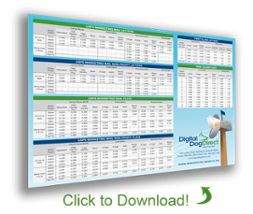 A good practice for any consumer direct mail campaign is to conduct an A/B test to male head of household vs. female head of household. More often than not, it is the woman of the house who not only brings in the mail, but who also reads and responds to it.
A good practice for any consumer direct mail campaign is to conduct an A/B test to male head of household vs. female head of household. More often than not, it is the woman of the house who not only brings in the mail, but who also reads and responds to it.
In fact, according to the National Mail Order Association, women have exclusive responsibility for sorting mail and choosing which items to keep for further consideration in two-thirds of U.S. households. By many other accounts, more than 80% of those who pick up the mail across the country every day are women, most of whom also serve as the primary shoppers both on and offline for their households.
Women also tend to read each and every direct mail piece addressed to them. Before you begin to concept copy and design based on these insights, be sure to keep your female recipients top-of-mind:
- Sell customer service — Women want to know that returns are nice and easy. Free shipping is always preferred and the ability to quickly reach a customer care representative by phone goes a long way to strengthen relationships.
- Impart useful information — Women do their research before buying and like to know why each purchase decision is a good one.
- Be personal — Speak woman-to-woman. Use first names in the copy and make each recipient feel special with messaging that targets their persona.
- Target Life Stage, Not Age — Most women are marrying and starting families later than previous generations. You’re very likely to find a 40-year old woman out in your local park with her newborn tucked into a jogging stroller. In most product categories, a woman’s life stage is more important than her age.
In total, women drive 70-80% of all consumer purchasing through their buying power and influence. Plus, they not only buy for themselves, but also for their husbands, partners, children, parents, in-laws, and nieces and nephews. Placing direct mail, telephone, and ecommerce orders, female shoppers easily constitute a vast majority of any consumer direct marketer’s prospective new customers.
Many women are also independently wealthy, fueling their purchasing power. According to She Economy, affluent women, who neither inherited nor married into wealth, are growing in number and controlling trillions of dollars in U.S. spending. From cars to healthcare to vacations, women are calling the shots at home. They pick up and read mail, place orders, and use coupons at retail locations.
Marketers need to acknowledge the dominance of decision-making women and personally address them directly through the mailbox.



Hi there, looking to execute a direct mail program to households that own small dogs (let’s say < 35 lbs.) – do you rent mailing lists for such a niche target?
Hi Greg,
We’d be happy to help you. Please contact us (http://www.digitaldogdirect.com/contact-us/) to get more information about how we can assist you.
Thank you!
We are looking for these qualities and how much is it per email they send out (ideally we’d love it if someone has a lead at .01 cent a lead).
Qualifications:
Home, townhome, apt/condo valued over 800k
Income over 300k
Women
Hi Shiela. Thanks for the comment! It sounds like you’re looking to secure a good list. We can help with that. Please contact us (http://www.digitaldogdirect.com/contact-us/) and we’ll discuss.
Thank you!